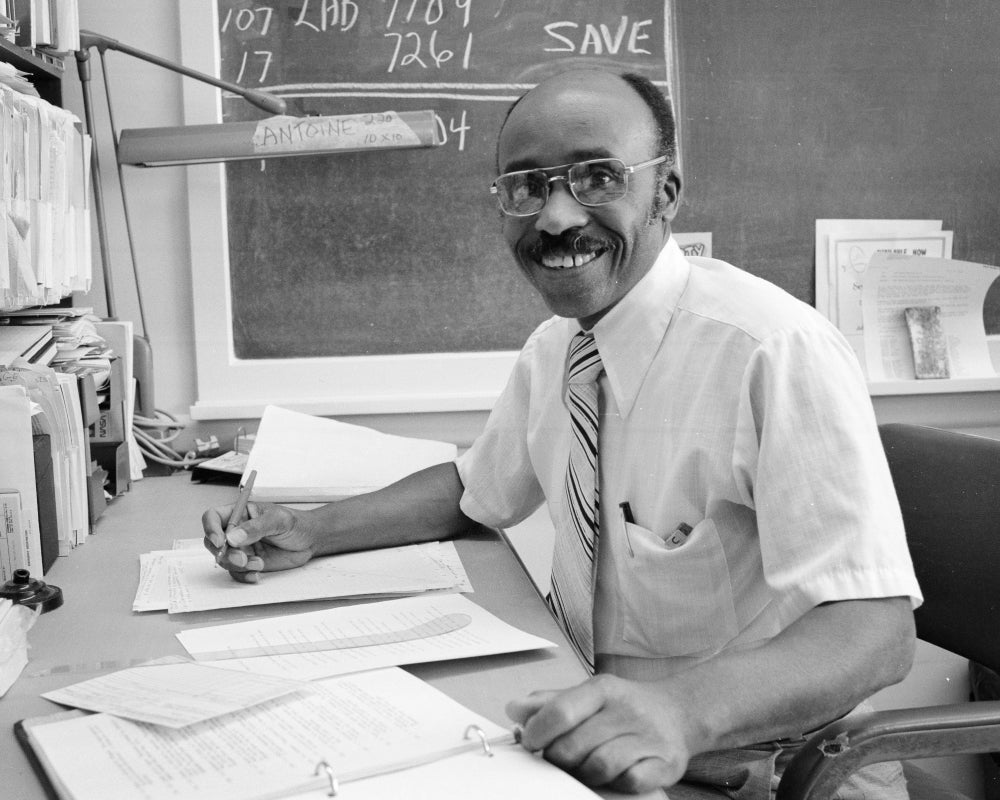ANTOINE, ALBERT CORNELIUS (1925 - 2017) was an AFRICAN AMERICAN chemist, professor, and minority advocate who worked for NASA from 1954 to 1983 researching jet fuels, little-known metals, air pollution, and renewable energy. Outside the lab, he worked to promote minority inclusion at NASA and other government research agencies.
Antoine was born in New York City to two West Indian (Caribbean) immigrants: Wilhelmina Marie and Emmanuel Evans Antoine. He went to New York ps.184 and Cooper Jr. High School, both in the historically Black Harlem district, before finishing his diploma at Townsend Harris in 1941. He got his B.S. from the City College of New York, but was drafted into the army before finishing his PhD; however, with WORLD WAR 2 winding down, and Antoine qualifying for the army’s Specialized Training Program, he was sent to Ohio State University instead of the front lines. Antoine finished his PhD in Chemistry in 1953, and taught for a year at Clark University, a historically Black Institution before moving to Cleveland for a job interview. There, on a whim, he applied at NACA’s (now NASA) LEWIS RESEARCH CENTER on recommendation of a former classmate, and was accepted to join in 1954.
At NACA, Antoine worked on rocket propulsion fuel sources based on boron and hydrazine, though the toxicity of these energy types would ultimately restrict their use. Lewis moved to researching spacecraft electric power systems, and did ground-breaking work on mercury, cesium, and sodium, whose properties were then poorly understood. He and 5 other Black scientists worked to promote NASA outreach at Black schools and universities in South-Western Ohio, a region where the agency had some history (in 1949 it had recruited Dorothy Vaughan from Wilberforce, a Historically Black School). In the 1970s, amidst a major energy crisis, the Lewis institute began researching combustion, pollution, and renewables. Antoine’s work on Air Pollution helped create new measurement techniques, and his group’s findings on renewable energies were published in 1982. Unfortunately, with the end of the energy crisis at the start of the ‘80s, the U.S. government and large corporations lost interest in the important subject. Antoine left NASA in 1983, and began working as an associate for CLEVELAND STATE UNIVERSITY, overseeing energy storage device research at the Lewis Building that ultimately produced the first commercial phosphoric acid fuel cell. He retired in 1996.
Antoine met his wife, Ohio native June Sallee, at Ohio State and married her in 1953. They had 4 children and attended SHAKER HEIGHTS' PLYMOUTH CHURCH for over 50 years, before his death in August, 2017.
Justin Evans


